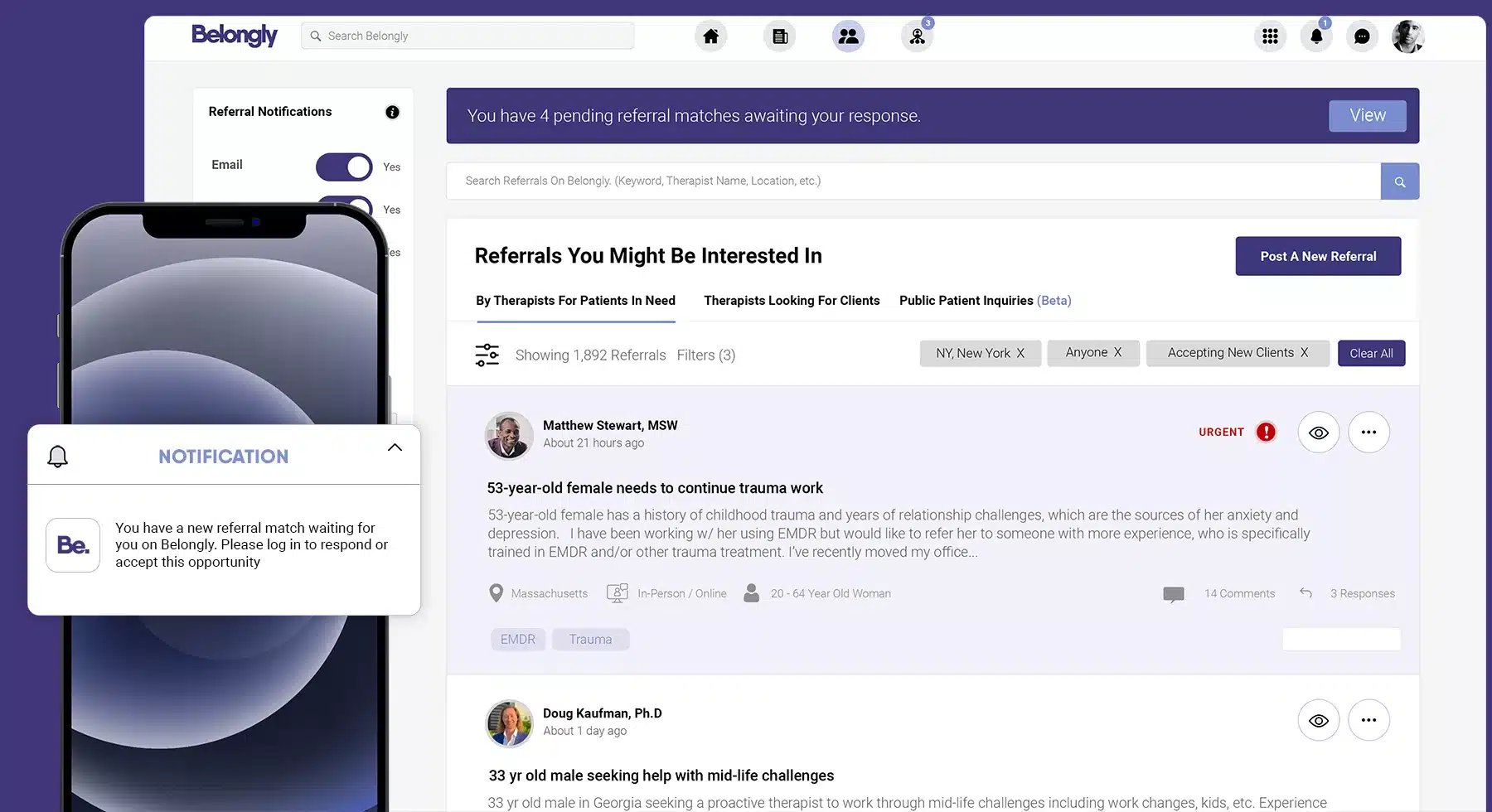As therapists, we routinely ask our clients how they are doing, but there is an equally important question we should be asking them: “How am I doing?” Regularly soliciting feedback from clients strengthens the therapeutic alliance, reduces drop-out, and improves treatment outcomes.
For example, a recent meta-analysis found that therapists who had a system for gathering client feedback had a 20 percent reduced drop-out rate.
Other studies have found that the simple act of asking clients for feedback effectively doubles treatment gains.
Two of the most thoroughly studied feedback measures are the Outcome Rating Scale (ORS) and the Session Rating Scale (SRS). Each scale has just 4 questions, making it simple and quick for clients to complete before and after each session. Individual practitioners can download paper and pencil versions for free, or purchase digital versions for easier administration and interpretation.
Knowledge is power, and the data you collect from your clients empowers you to better understand what is and is not working. Here are some ways you can use client feedback to improve therapy sessions:
Create an open dialogue:
Therapy is supposed to be a safe, non-judgmental space. Still, many clients are hesitant to offer negative feedback. They might be worried about hurting the therapist’s feelings or fear that treatment will be discontinued if they express dissatisfaction. Regularly and systematically collecting feedback helps to circumvent these reservations.
Explain to your clients that feedback is part of the therapy process, and reassure them that their responses will help you to tailor the treatment to their needs and preferences. Let them know that you value their honesty and that whatever they say, it will not affect their access to treatment.
Repair ruptures to the therapeutic relationship:
Collecting feedback regularly can help to identify and address any ruptures to the therapist-client alliance. For example, if a client feels misunderstood or invalidated in a session, they can indicate this on the SRS. You can then address their concerns and make any necessary repairs to the relationship.
Tailor sessions to clients’ individual needs and preferences:
Every client is unique, requiring an individualized approach for optimal progress. Some clients prefer that therapists ask a lot of questions, while others would rather the therapist be an impartial observer. Some want concrete strategies to practice at home, while for others this can be a setup for perceived failure. By actively seeking feedback, you can identify what techniques are and are not working and adjust your approach accordingly.
Monitor progress:
We therapists are an intuitive bunch, but when it comes to assessing patient progress, our intuition isn’t always accurate. On average, therapists estimate that 85 percent of their patients improve, but research shows actual improvement rates of around 50 percent. Thus, it’s essential to have an objective means of monitoring treatment gains. By regularly soliciting feedback from your clients, you can identify areas of progress as well as areas still in need of improvement. You can then use this information to adjust your approach, introduce new techniques, or seek consultation where appropriate. Monitoring your clients’ progress will also help you to determine when it might be time for termination.
Professional development:
Another area where client feedback is helpful is in identifying areas for professional development. By looking for trends in patients’ responses, you can gain insight into your personal strengths and weaknesses. For example, if clients consistently feel their concerns are not being addressed in session, you may need to work on staying on topic. If your clients state a preference for more structured sessions, you might want to think about getting trained in DBT or a similar modality. By using client feedback to identify areas for professional development, you can continually improve both your clinical skills and the quality of care you provide to clients.
Keep Reading
Want more? Here are some other blog posts you might be interested in.










